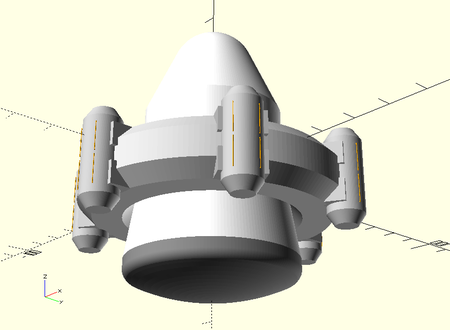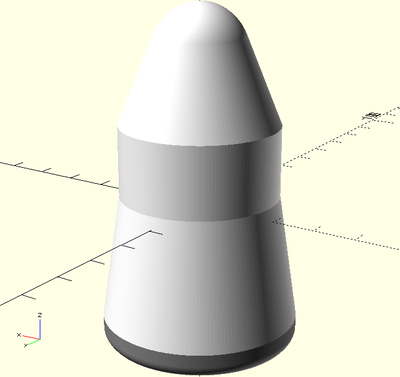Difference between revisions of "USS Poul Anderson"
(Created) |
|||
| Line 12: | Line 12: | ||
"warp collar" which provides warp capability. The vehicle has a nominal crew of five but can carry ten if required (depending on planetary gravity, launch latitude, etc.) The design is approximately a blunt cone with circumferential rocket nozzles around the heat shield to create an aerospike. | "warp collar" which provides warp capability. The vehicle has a nominal crew of five but can carry ten if required (depending on planetary gravity, launch latitude, etc.) The design is approximately a blunt cone with circumferential rocket nozzles around the heat shield to create an aerospike. | ||
| − | [[File:Anderson-docked.png]] | + | The following CAD images show an Anderson-type lander with and without its warp collar. |
| + | |||
| + | [[File:Anderson-docked.png|450px|left]] | ||
| + | [[File:Anderson-alone.png|400px|right]] | ||
Revision as of 21:38, 31 December 2016
USS Poul Anderson
Background
The United States Starship Poul Anderson is one of the landing vehicles of the first Alpha Centauri expedition, as described in Alpha Centauri: First Landing and [[Alpha Centauri: Saywer's World]. It is named (both in the book and in real life) for renowned American science fiction author Poul Anderson (1926-2001), winner of, among other awards, seven Hugos and three Nebulas.
Alastair Mayer, the creator of T-Space, is a fan of Anderson's work and met and worked with him at several meetings of the Citizens' Advisory Council on National Space Policy.
The book Alpha Centauri: First Landing is dedicated to both Poul Anderson and Robert A. Heinlein (after whom the expedition flagship is named).
Details
Like the other landers in the book, the USS Poul Anderson is based on a SSTO ship (similar to the Phoenix series designed by Gary Hudson at Pacific American Launch Systems) for the planetary descent and ascent phases, which docks with an Interstellar Propulsion Module or "warp collar" which provides warp capability. The vehicle has a nominal crew of five but can carry ten if required (depending on planetary gravity, launch latitude, etc.) The design is approximately a blunt cone with circumferential rocket nozzles around the heat shield to create an aerospike.
The following CAD images show an Anderson-type lander with and without its warp collar.

